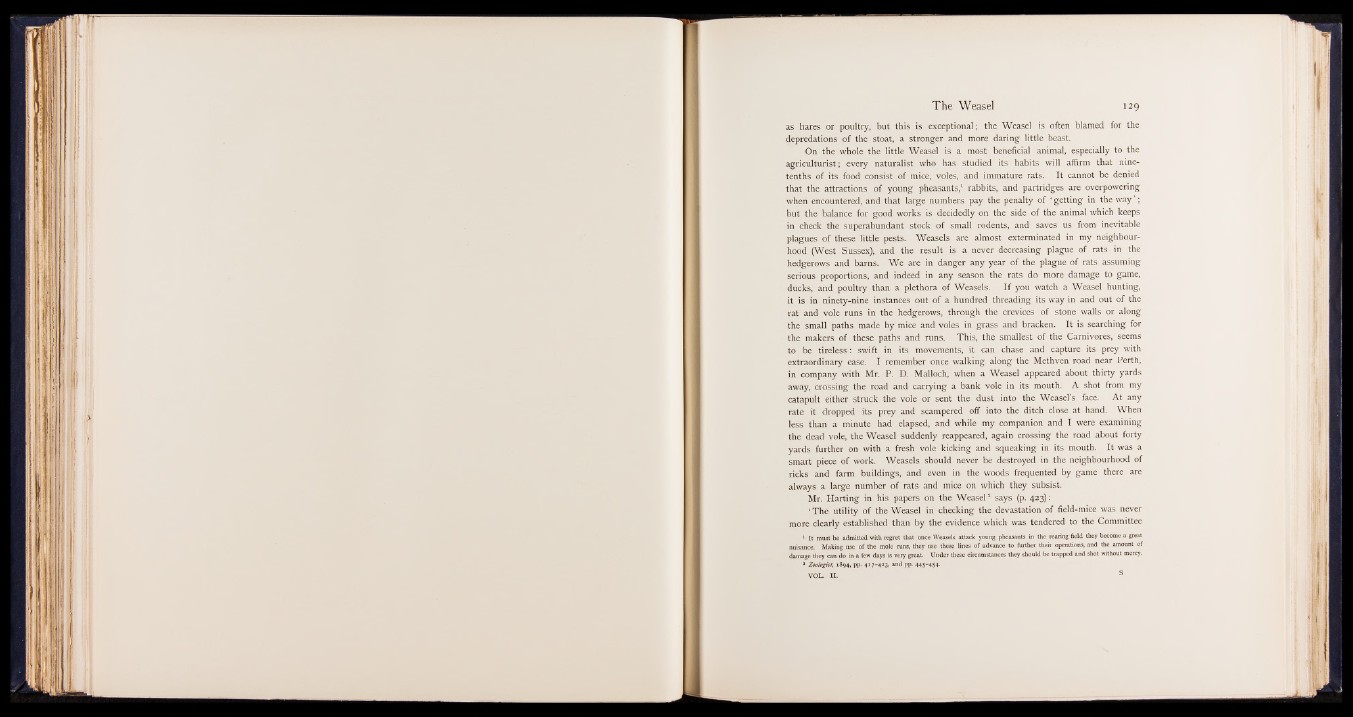
as hares or poultry, but this is exceptional; the Weasel is often blamed for the
depredations of the stoat, a stronger and more daring little beast.
On the whole the little Weasel is a most beneficial animal, especially to the
agriculturist; every naturalist who has studied its habits will affirm that nine-
tenths of its food consist of mice, voles, and immature rats. It cannot be denied
that the attractions of young pheasants,1 rabbits, and partridges are overpowering
when encountered, and that large numbers pay the penalty of ‘ getting in the way ’ ;
but the balance for good works is decidedly on the side of the animal which keeps
in check the superabundant stock of small rodents, and saves us from inevitable
plagues of these little pests. Weasels are almost exterminated in my neighbourhood
(West Sussex), and the result is a never decreasing plague of rats in the
hedgerows and barns. We are in danger any year of the plague of rats assuming
serious proportions, and indeed in any season the rats do more damage to game,
ducks, and poultry than a plethora of Weasels. I f you watch a Weasel hunting,
it is in ninety-nine instances out of a hundred threading its way in and out of the
rat and vole runs in the hedgerows, through the crevices of stone walls or along
the small paths made by mice and voles in grass and bracken. It is searching for
the makers of these paths and runs. This, the smallest of the Carnivores, seems
to be tireless: swift in its movements, it can chase and capture its prey with
extraordinary ease. I remember once walking along the Methven road near Perth,
in company with Mr. P. D. Malloch, when a Weasel appeared about thirty yards
away, crossing the road and carrying a bank vole in its mouth. A shot from my
catapult either struck the vole or sent the dust into the Weasel’s face. At any
rate it dropped its prey and scampered off into the ditch close at hand. When
less than a minute had elapsed, and while my companion and I were examining
the dead vole, the Weasel suddenly reappeared, again crossing the road about forty
yards further on with a fresh vole kicking and squeaking in its mouth. It was a
smart piece of work. Weasels should never be destroyed in the neighbourhood of
ricks and farm buildings, and even in the woods frequented by game there are
always a large number of rats and mice on which they subsist.
Mr. Harting in his papers on the Weasel2 says (p. 423):
‘ The utility of the Weasel in checking the devastation of field-mice was never
more clearly established than by the evidence which was tendered to the Committee
1 it must be admitted with regret that once Weasels attack young pheasants in the rearing field they become a great
nuisance. Making use of the mole runs, they use these lines of advance to further their operations, and the amount of
damage they can do in a few days is very great. Under these circumstances they should be trapped and shot without mercy.
* Zoologist, 1894, pp. 417-423, and pp. 445- 454-
VOL. II. S